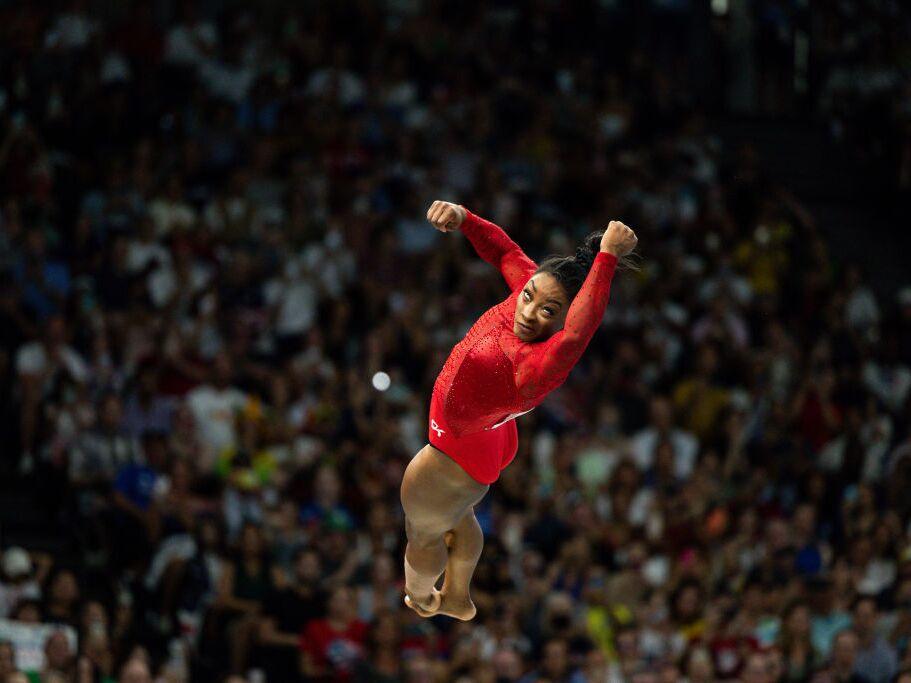Section Branding
Header Content
How older athletes powered up and transformed women's gymnastics
Primary Content
In 1976, Nadia Comaneci, the 14-year-old Romanian athlete, won gold with the first perfect 10 ever scored in the Olympics.
After that, the ranks of elite female gymnasts – which previously included women in their 20s and 30s – filled with adolescents and young teens.
“If you look earlier in the '80s [and] '70s, a lot of gymnasts looked the same,” said Janelle McDonald, the head coach of women’s gymnastics at the University of California, Los Angeles.
The pressure to make it young and stay small was intense: Female gymnasts feared going through puberty since getting a period meant growing taller and gaining weight.
“In the past, this is when you saw a lot of athletes drop out of the sport,” said McDonald. “Because they weren’t being given the grace to let their bodies grow and change.”
Then, in 1997, the International Gymnastics Federation raised the minimum age for Olympic eligibility to 16 to protect girls’ health. Rather than dooming the sport, as some commentators had predicted, it instead transformed it.
“Our sport is a sport of repetition, and the more you can get those reps under your belt, the stronger you are going to get,” McDonald said.
Practicing for years and years allows gymnasts to perfect their timing and body awareness, and “as you go through puberty,” she added, “you actually get stronger, you get more powerful, you have that ability to do some of the skills that we’re seeing the athletes perform.”
That includes five moves the International Gymnastics Federation code of points has named after Simone Biles that demonstrate the 27-year-old gymnast’s power, strength, and precision.
For instance, on floor, Biles executes a tumbling pass that ends in a triple double — two flips and three full twists. On the vault, Biles performs a Yurchenko double pike, the hardest vault in women’s gymnastics which requires speed and tremendous abdominal and leg muscles, and Jordan Chiles, 23, throws a double-twisting Yurchenko.
Puberty is a critical time for growth: Testosterone levels increase in girls which helps to build muscle mass; and girls gain high levels of estrogen which helps to build bone density, said Dr. Anne-Marie Amies Oelschlager, a pediatric and adolescent gynecologist at the University of Washington who works with young athletes.
When the bones are developing during puberty, the growth plates are open, and the growth plates don’t close until there are healthy levels of estrogen from ovulation.
“The nice thing about delaying the age of entry into the Olympic gymnastics is that when people are competing, like Simone Biles, she has healthy bones that have been able to fully mature,” said Amies Oelschlager.
The longevity of female gymnasts’ careers today — the average age of Team USA increased from 16.45 in 1992 to 22.47 in 2024 — is aided by the psychological maturity and the personal independence that comes with getting older, said Amies Oelschlager.
Training and performing an elite sport as an adolescent under duress because of pressure from coaches and parent is far different than an “25-year-old saying, ‘I’m going to do this. This is my choice and I’m going to keep going,’” said Amies Oelschlager. “It’s a different psychological mindset.”
UCLA coach McDonald returned recently from the Olympic Games in Paris where she was coaching UCLA athlete Emma Malabuyo who was competing for the Philippines.
She welcomes this new era in women’s gymnastics with a large roster of athletes competing at the highest levels. Gymnasts are enjoying the sport more because they can use their voice, show their personality and have a say in their training.
“I really do think it’s this shift in the sport,” she said. “The skills we’re seeing right now blow me out of the water.”

